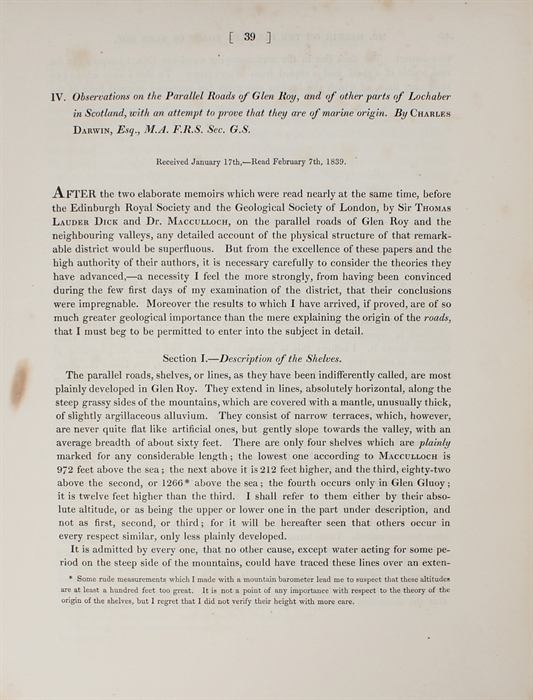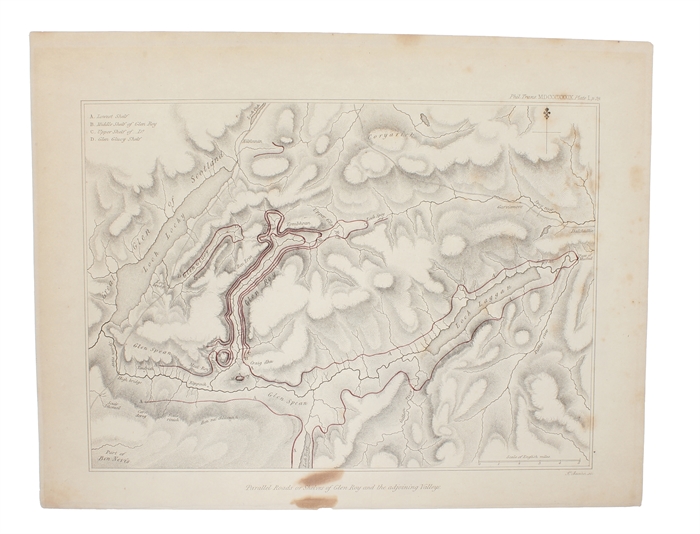DARWIN, CHARLES.
Observations on the Parallel Roads of Glen Roy, and of other parts of Lochaber in Scotland, with an attempt to prove that they are of marine origin.
(London, Richard and John E. Taylor, 1839). 4to. Without wrappers. Extracted from "Philosophical Transactions of the Royal Society of London.", 1839, Part I. Pp. 39-81 and 2 plates. (1 engraved map and 1 lithographed plate). Both plates with a few brownspots.
First appearance of Darwin's investigations of the geological phenomenon of the so-called "Parallel Roads" in Scotland.
"The first published description of the Parallel Roads was by Thomas Pennant in 1771 in his book A Tour of Scotland. This work was far from scientific but during the 19th century Glen Roy played an important role in the development of geological and geomophological theories of landscape evolution.1 Initially the 'Roads' were believed to be lake or marine shorelines. How they were formed in an area that was now high above the sea and without signs of a closed lake bed was a mystery. Initially it was thought that the shorelines were of marine origin and formed during a period when the sea reached levels of the Parallel Roads. Among the proponent of this theory were both Charles Darwin and Charles Lyell.2 It was in particular Darwin who was impressed by the geology of Glen Roy. In 1838 he wrote to Lyell, "I wandered the mountains in All directions and examined that most extraordinary district. I think without any exceptions, not even the first volcanic island, the first elevated beach, or the passage of the Cordillera, as so interesting to me as this week. It is far the most remarkable area I ever examined. ... I can assure you Glen Roy has astonished me".3 Darwin and Lyell proved to be wrong in this matter." (Jan Oosthoek).
Freeman 1653.
Order-nr.: 54344



